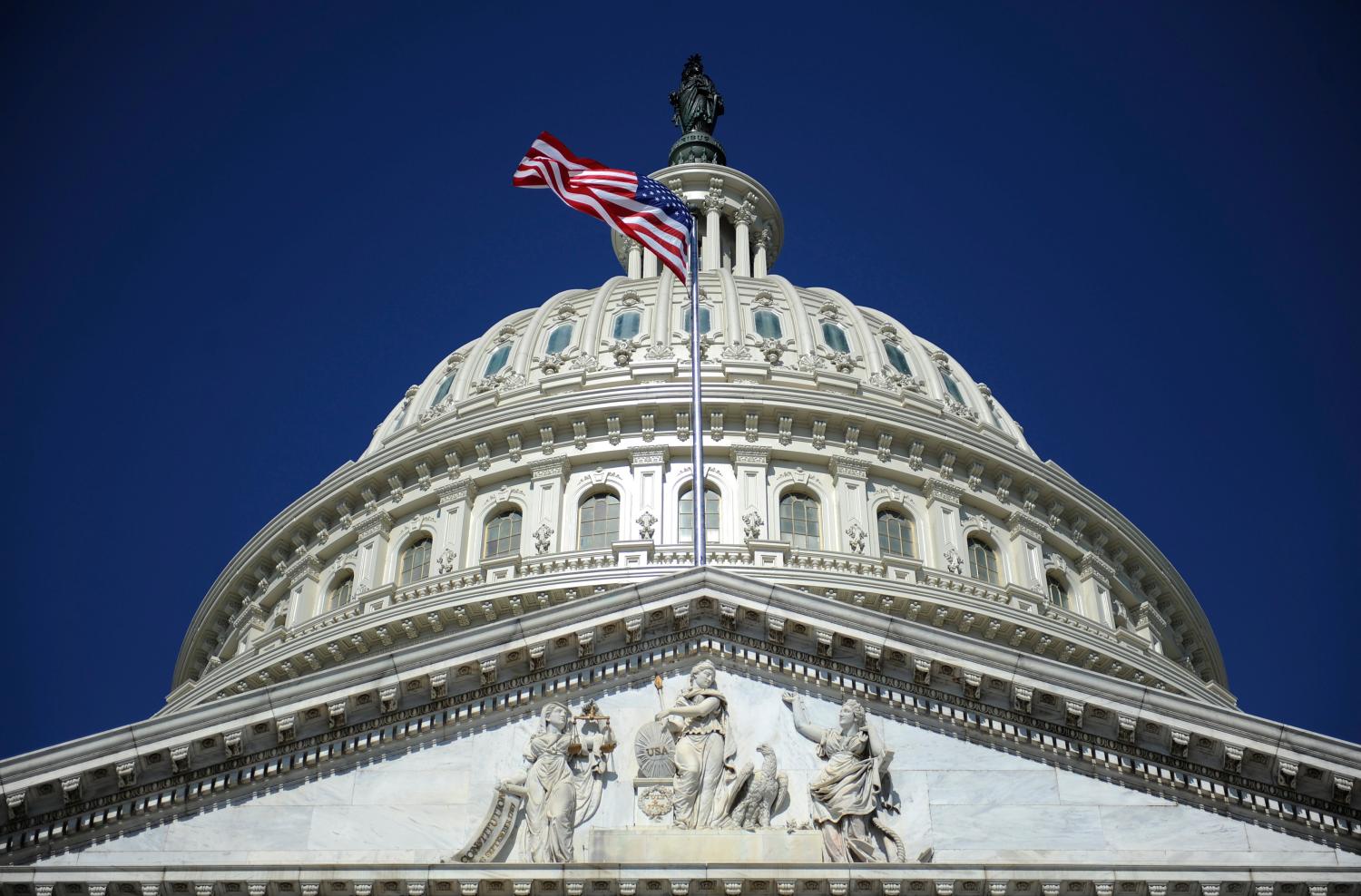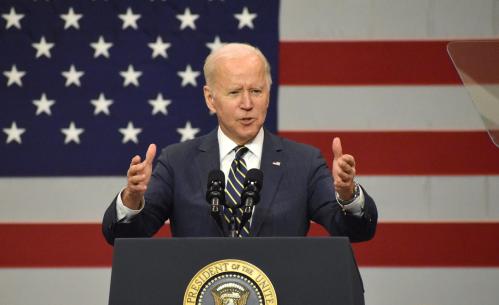Special thanks to Andy Cerda, Jordan Muchnick, Sylvia Garrett and John Hudak for their work on the 2022 Primaries Project.
Trump is no doubt a very popular figure in Texas, but the primaries yield no reason whatsoever to think that Trump is a force to be reckoned with. This is the big takeaway from the March 1 Texas primary—the first state to hold primaries. Other states will hold their primaries between now and September and from them we will learn a lot about the shape of American politics in the years to come.
Party primaries are now the most consequential elections in American politics. For many years they have been the ugly stepchild of American politics; ignored by journalists and snubbed by political scientists. All that is changing. In the 1970s, 33% of all House districts were classified as competitive. By the 2010s that number had dropped to 14% and the number of safe districts had increased from 30% to 60%. And the trend towards more and more safe seats appears to be continuing as states finish drawing their maps after the 2020 census. With more and more states and congressional districts becoming dominated by one party or the other, the only real choices for voters come in party primaries.
Because America’s two parties are “big tents” that accommodate a fairly large variety of views and political cultures, the place to evaluate which factions are strong and which are not are the primaries. Consequently, party primaries give us a heads up on what is happening within each political party. For instance, conventional wisdom tells us that the Republican Party is dominated by Donald Trump. Conversely, conventional wisdom tells us that the Democratic Party has made a lurch to the left. Since only a handful of primaries in each state are high profile enough to warrant press coverage, journalists tend to generalize from them—especially when they fit into the prevailing narrative.
However, these headlines are often misleading. Only by looking at every single primary and every single candidate can we get a good sense of the relative strength of a faction within a political party. In 2014, Brookings conducted the first ever study of all the candidates running in the congressional primaries that year. We repeated the study in 2016 and again in 2018—skipping 2020 because the pandemic created massive uncertainty during the primary season. Each year brought new insights. For instance, in 2018, in spite of all the attention received by Bernie Sanders and Alexandria Ocasio-Cortez, progressive challengers in their mold won only 22% of their races. Hardly the shift to the left that would be expected in a party being taken over by the left.
Here at Brookings we are currently conducting the same comprehensive study of candidates in the 2022 congressional primaries. These primaries stretch from March until September. And we will report on the results as the primaries happen.
So, let’s begin with the Texas Primary which was held on March 1. A total of 222 candidates ran in the Texas primaries. Of this number, 79 were Democrats and 143 were Republicans—a number that is not surprising in a very Republican state. As we will see as the primary season unfolds, many primaries are uncontested. In Texas, on the Democratic side—15 out of 38 congressional districts had uncontested Democratic Primaries and 6 districts didn’t even have a Democratic primary candidate. On the Republican side, 11 out of 38 districts had uncontested Republican primaries.
Also, many of the congressional primary candidates are incumbents and historically incumbents almost never lose primaries or general elections. Writing in Sabato’s Chrystal Ball, Kyle Kondik shows that since 1946 the incumbent re-election rate in primaries is an astonishing 98%. Since incumbents win for a wide variety of reasons besides ideology—money, name recognition, years of service to the district, experience—the real test of emerging grass roots strength in a political party is how the challengers perform—not the incumbents.
For instance, conventional wisdom coming out of Texas is how well Donald Trump did in the Texas primaries. One headline ran—“The Texas primaries were a case study in polarization. The most conservative and most progressive candidates thrived. There’s a lesson in that.” But often the Monday morning quarterbacking of primaries focuses on only the most high-profile races. In the case of Texas, that was the survival of Trump’s candidate for Attorney General, the incumbent Ken Paxton, who soundly beat George P. Bush in spite of the fact that he is under a federal investigation.[1]
But a bigger look at Trump’s congressional level endorsements paints a much more nuanced picture.
Donald Trump endorsed 18 candidates in the Republican primaries for the U.S. House, which meant that he did not play a direct role in 20 races. Trump endorsed 7 candidates in races that were uncontested, and he endorsed 7 incumbents in races that had an incumbent. In these races, Trump was endorsing a sure winner. The real test of Trump’s strength is how those who were endorsed by Trump fared in the four other contested primaries. But Trump endorsed only 2 challengers—Monica de la Cruz Hernandez and Wesley Hunt. Both candidates won their respective races. The remainder of his endorsements were incumbents. Thus, while the headlines focused on Trump’s strength—the fact is that he took no risks when it came to endorsements.
As Table #1 shows, there were congressional candidates in Texas who were not endorsed by Trump, but who ran with photos of Trump on their webpages or with complimentary language about Trump in their issue positions. We categorized these as MAGA/Trump Conservatives. Mainstream conservatives often had similar positions on issues, but they stayed away from mentioning Trump on their official campaign websites or Facebook pages.

Out of the 143 Republican congressional primary candidates, 42 (nearly one-third), tied themselves explicitly to Trump. Nine won their races, two went into run-offs and thirty-one lost. As the chart indicates, there were mostly mainstream and moderate conservatives among the Republican primary candidates, and they did better than the MAGA/Trump conservatives with 21 winning outright and nine advancing to run-offs.
The same analysis can be applied to the Democratic congressional primary candidates. Progressive leaders (Bernie Sanders, AOC, Nina Turner, etc.) or progressive organizations (Our Revolution, Justice for All, etc.) endorsed 7 out of 79 candidates. Of those, Laura Jones in the 8th congressional district was in an uncontested primary and the six others were in contested primaries (0 were incumbents).[2] The most high-profile race on the Democratic side was Jessica Cisneros’ challenge to incumbent Henry Cuellar. In spite of the fact that the FBI had raided his home and office just days prior to the primary, Cisneros couldn’t win the primary outright against Cuellar, who won more votes and is headed into a runoff with Cisneros.
Candidates endorsed by progressive leaders won two races (Greg Casar in Texas 35 and Laura Jones in Texas 8) and three others advanced to runoffs (Jasmine Crockett in Texas 30, Diana Alexander in Texas 38 and Jessica Cisneros in Texas 28.) Unlike Trump, progressive leaders endorsed in competitive races where four out of their six candidates did well.
However, as with the Republicans, there were more candidates who ran echoing the themes of the progressive leaders than there were candidates who received formal endorsements. As Table #2 illustrates, there were nearly as many candidates running as progressives than there were candidates running as mainstream Democrats/mainstream liberals—a good indication of the energy in the left wing of the Democratic party. Overall, however, they did not do very well. Only 12 won outright or progressed to a run-off compared to 20 of the mainstream Democrats.

What are we to make of this look at the first primary? On the Republican side there are many Trump wannabees but many more mainstream conservatives who share some of Trump’s positions but don’t necessarily want to be tied explicitly to Trump—even in a Republican primary. The lessons from the Virginia Governor’s race appear to have legs—in many Republican districts Trumpism without Trump is a pretty good place to be electorally. On the Democratic side, the left wing has a great deal of energy, recruiting many candidates. Progressive leaders endorsed a small number of candidates who did fairly well, however, the non-endorsed progressives didn’t do particularly well on election day. Especially in conservative Texas, the left doesn’t seem to be very popular even in the Democratic districts these candidates mostly come from.
As the primary season progresses, we will continue to explore the story behind the headlines and what it means for the shape of American politics to come.
[1] Paxton beat challenger George P Bush 42.7% to 22.8% and they are headed to a runoff. The third-place candidate Eva Guzman got 17.5% so to defeat Paxton Bush needs to get all of Guzman’s votes plus some.
[2] The six that were in contested races were Greg Casar, Jessica Mason, Diana Alexander, Jasmine Crockett, Jessica Cisneros, and Gavin Dass.
The Brookings Institution is committed to quality, independence, and impact.
We are supported by a diverse array of funders. In line with our values and policies, each Brookings publication represents the sole views of its author(s).









Commentary
Lessons from the Texas Primary and why primaries are the most important races in America
March 7, 2022